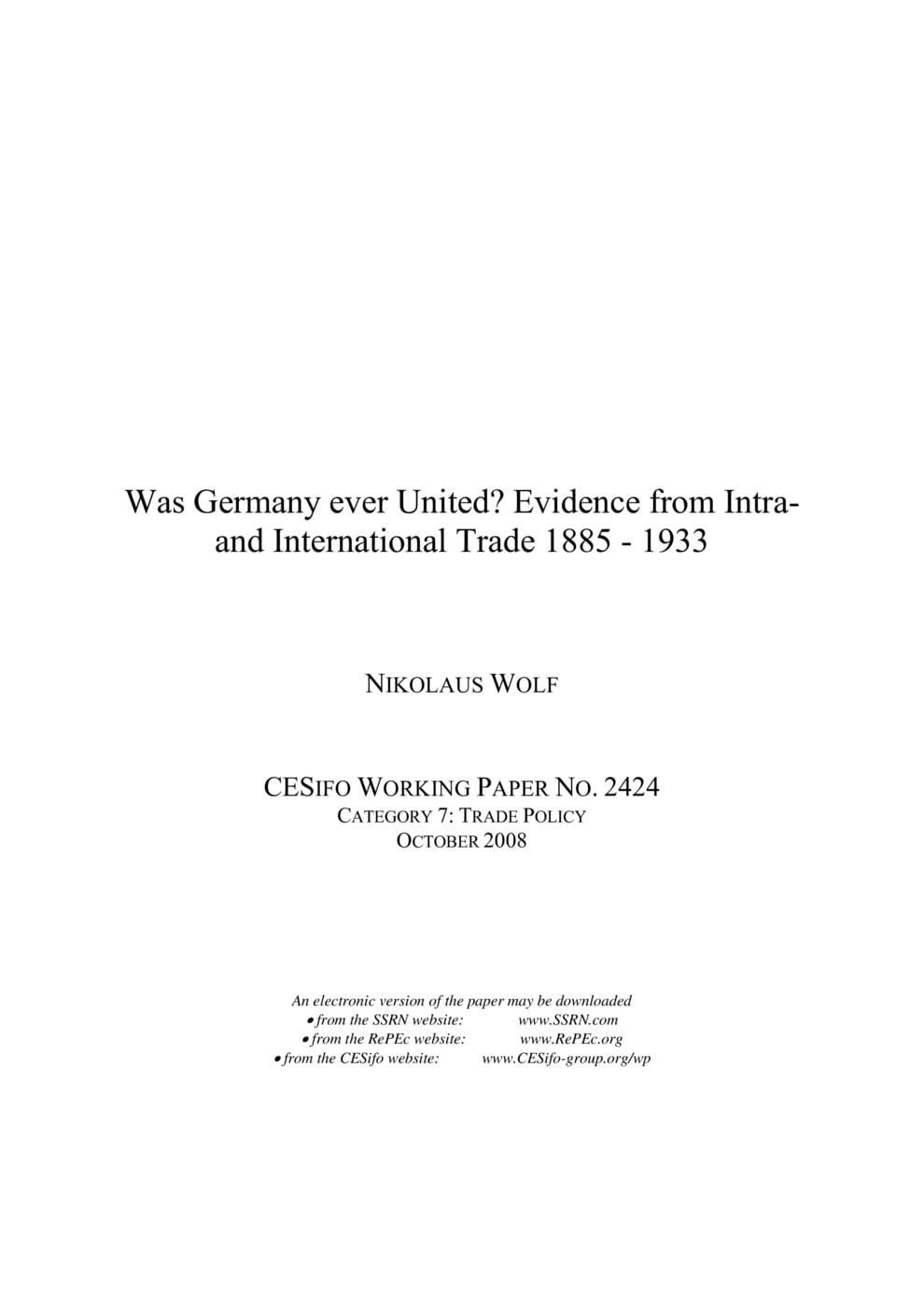Was Germany ever United? Evidence from Intra- and International Trade 1885 - 1933
CESifo, Munich, 2008
CESifo Working Paper No. 2424

When did Germany become economically integrated? Within the framework of a gravity model, based on a new data set of about 40,000 observations on trade flows within and across the borders of Germany over the period 1885 – 1933, I explore the geography of trade costs across Central Europe. There are three key results. First, the German Empire before 1914 was a poorly integrated economy, both relative to integration across the borders of the German state and in absolute terms. Second, this internal fragmentation resulted from cultural heterogeneity, from administrative borders within Germany, and from geographical barriers that divided Germany along natural trade routes into eastern and western parts. Third, internal integration improved, while external integration worsened after World War I and again with the Great Depression, in part because of border changes along the lines of ethno-linguistic heterogeneity. By the end of the Weimar Republic in 1933, Germany was reasonably well integrated.
Trade Policy